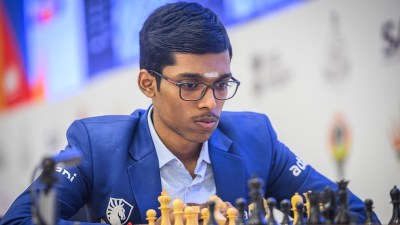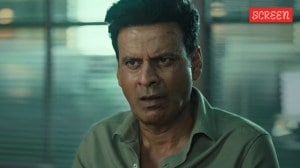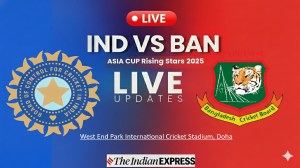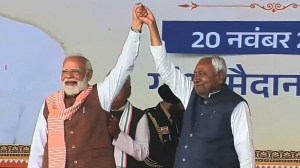
Preliminary Examination: Current events of national and international importance
Mains Examination: General Studies-II: Important aspects of governance, transparency and accountability, e-governance applications, models, successes, limitations, and potential; citizens charters, transparency & accountability and institutional and other measures.
General Studies IV: Public/Civil service values and Ethics in Public administration
What’s the ongoing story: Underlining that the imperative of governance is to build trust between the government and society, Ashwini Vaishnaw, Union Minister of Railways, Information & Broadcasting, Electronics and Information Technology, said Tuesday that people need to believe that the “system will work for us, support us and give us justice”.
Key Points to Ponder:
— What is governance?
— What is P2G2?
— What is integrity? Why is integrity important for a civil servant?
— What is the PM Excellence Awards?
— What is the importance of a strong value system for politicians and bureaucrats?
— Read about the evolution of ICS
Story continues below this ad
— What is the role of District magistrates in implementing good governance?
— How the Indic concept of Raj Dharma can resonate with the modern idea of good governance?
Key Takeaways:
— Vaishnaw said the District Magistrate is in fact an institution because “there is so much trust and expectation from people from that one particular person who acquires that position”.
— “Governance is the ability to develop the trust between the government and the society — when the society believes that we have a system which will be working for us, which will support us, and give us justice when we need it,” he said.
Story continues below this ad
— “Integrity should not only be practised but it should be seen to be practised. The best measure of it is that it is practised when nobody is watching you,” he said, adding that he appreciated the current crop of civil servants, for learning to “balance their public obligations, also political obligations”.
— Jitendra Singh said: “Integrity should not only be practised but it should be seen to be practised. The best measure of it is that it is practised when nobody is watching you.” He said he appreciated the current crop of civil servants, for learning to “balance their public obligations, also political obligations”.
Do You Know:
— There are at least three reasons why revisiting good governance is critical today. First, in face of growing disenchantment with democracy in several parts of the world, the “unified theory” mooted by Harvard academic Pippa Norris merits serious consideration.
—- Second, given the inevitable role of the human element in good governance, practice would require changing people’s mindsets to be effective. Conversations in the past 10 years in the country offer significant clues.
Story continues below this ad
— Third, we should explore how the Indic concept of Raj Dharma can resonate with the modern idea of good governance.
— As is well-known, the origin of the concept dates back to 1992. A World Bank report of that year, “Governance and Development”, marks the first attempt at defining the concept. Later, eight parameters were listed — participatory, consensus-oriented, accountable, transparent, responsive, effective and efficient, equitable and inclusive, and the rule of law — as defining attributes of Good Governance.
— Herein lies the importance of P2G2, a term coined by Prime Narendra Modi when he was the chief minister of Gujarat. P2G2 is pro-people good governance — it’s the Gangotri of sensitivity, commitment and sense of responsibility. Without all this Good Governance is merely theoretical.
Other Important Articles Covering the same topic:
📍Officers should have open mind, listen to people and find solutions
Story continues below this ad
📍The civil service of half a century ago is not the one of today, says MoS Singh
📍In with the new, and the old: Indic ideas can contribute to good governance
UPSC Mains Question Covering similar theme:
‘In the context of neo-liberal paradigm of development planning, multi-level planning is expected to make operations cost effective and remove many implementation blockages.’ Discuss. (2019)
THE IDEAS PAGE
Syllabus:
Preliminary Examination: Current events of national and international importance
Mains Examination: General Studies II: Structure, organisation and functioning of the Executive and the Judiciary.
Story continues below this ad
General Studies-III: Science and Technology- developments and their applications and effects in everyday life
What’s the ongoing story: T K Vinod Kumar writes: One of the significant decisions of the new US government has been the $100 billion Stargate AI initiative. Meanwhile, China is quickly catching up with the US in their bid for AI supremacy by developing cheaper LLMs like QWQ and DeepSeek. These developments are set to transform the global technology landscape.
Key Points to Ponder:
— What is SMART policing?
— What is IndiaAI Mission?
— How AI can be utilised in administration and judiciary?
— What are the concerns associated with the use of AI?
— How does the introduction of Deepseek by China redefine the battle for AI supremacy?
Story continues below this ad
— What are the initiatives taken by India to develop its own AI model?
— What are the recent collaborations signed by India in this regard?
Key Takeaways:
— Like the expansion of the internet and cyber technology, AI’s impact on crime and crime control is inevitable… Today, the country must again rise to the challenge by understanding AI’s implications on crime and security and harnessing its power to strengthen the criminal justice system.
— AI also presents an opportunity to improve the capacity of the criminal justice system. Police in India are burdened by a large number of cases. The introduction of AI to improve the complaint registration process, monitor the progress of investigations, flag the steps to be taken, and assess the quality of the investigation would enhance both efficiency and transparency.
Story continues below this ad
— AI can also be used in field-level work to analyse data generated in day-to-day operations such as crime location data, patrolling patterns, and routes used by offenders to develop predictive models to guide police operations.
— The supervisory burden at the district headquarters can also be greatly reduced through the use of AI for data collation and analysis. With its extensive capacity to process spreadsheets, images, and auditory data, AI can make supervision more efficient and enhance the capacity to deliver justice.
— At present, a large number of police personnel are used for administrative work, whether related to crime control or personnel management. These officers can be freed for work that could directly benefit the public, such as investigation, law and order patrolling and traffic management.
— The government of India has been pursuing the policy of SMART policing, interpreted as Strategic, Meticulous, Adaptable, Reliable, and Transparent policing. AI can, therefore, improve the rigour and meticulousness of the criminal justice process. It can meticulously filter every bit of information to avoid any form of error in decisions across cases, enhancing the reliability of the justice process.
— The judicial system in India has great legitimacy among the public. However, this well-earned legitimacy is being undermined by a backlog of over 50 million cases. It is not possible for a society to ensure the rule of law with justice being delayed and denied to so many.
— To begin with, technology can be used at the trial stage through AI-powered transcription of court proceedings. Management of case files and other documents by automation can make it easier to store, access, and share documents.
— AI would be an asset for judges while conducting research and writing judgments. It could also be used for supervising the workload of lower courts by higher courts. These steps have to be taken after ensuring accuracy, data privacy, and other ethical considerations.
— From a policy perspective, the central and state governments could take steps to enhance the efficiency of the criminal justice system through the extensive use of AI. As a first step, a task force should be appointed to study and recommend modalities of the use of AI in public service, especially justice administration.
Do You Know:
— Artificial intelligence (AI) refers to the field of computer science which aims to make computer systems think, reason, learn, and act to solve a complex system like humans.
— To enable computer systems to imitate the way that humans learn, and perform tasks autonomously (meaning, without instructions), machine learning (ML) is used. ML is implemented by training (this term will also be explained in subsequent explainers) computers on data so that they can make predictions about new information.
— The new AI model released by DeepSeek is a lesson for India (and also a source of hope): It is possible to kick-start the AI development journey on its own terms, without investing billions of dollars into building massive data centres or flooding the process with vast amounts of data to improve results.
— India needs to build AI technology from scratch — completely indigenous and not reliant on OpenAI or Google — and a lead in AI can only be achieved if the government, institutions, and domestic companies come together to invest in research, create an ecosystem, and develop the right AI infrastructure.
— A few days after DeepSeek’s low-cost foundational model rattled tech stocks across markets, Vaishnaw announced that the government is building a domestic large language model (LLM) of its own as part of the Rs 10,370 crore IndiaAI Mission.
Other Important Articles Covering the same topic:
📍AI basics: What are artificial intelligence and machine learning?
📍For India, why the AI arms race is far from over
📍DeepSeek’s Sputnik moment: 5 ways in which US-China AI race plays out for India
UPSC Mains Question Covering similar theme:
Analyze the potential of AI to enhance the efficiency and transparency of the Indian criminal justice system.
EXPLAINED
Syllabus:
Preliminary Examination: Indian Polity and Governance – Constitution, Political System, Panchayati Raj, Public Policy, Rights Issues
Mains Examination: General Studies-II: Constitution of India —historical underpinnings, evolution, features, amendments, significant provisions and basic structure.
What’s the ongoing story: Home Minister Amit Shah assured southern states last week that they wouldn’t lose “even a single seat” after the fresh delimitation of constituencies. It was an attempt to address concerns, especially in Tamil Nadu and Kerala, about the potential loss of parliamentary representation if the exercise is based only on population data.
Key Points to Ponder:
— What is delimitation?
— What are the constitutional provisions related to delimitation?
— What do you understand by ‘one citizen, one vote’ one value’ principle?
— What is the importance of the Census?
— What are the concerns related to delimitation?
— Is the Delimitation Commission’s decision beyond judicial review?
— Read about the following articles: Article 81, 82, 170
Key Takeaways:
— The 2021 Census, which was delayed by the Covid-19 pandemic, is expected to begin this year, and will be followed by the delimitation of constituencies. The Constitution (Eighty-Fourth Amendment) Act, 2002 froze existing constituency boundaries until “the first Census taken after the year 2026”.
— The delimitation of constituencies represents the constitutional commitment to a fair and representative electoral framework and the equitable representation of citizens in elected bodies.
— The number of constituencies in Parliament and state Assemblies is adjusted according to the latest population figures to ensure that the number of Indians represented by an MP/ MLA remains roughly the same. (The principle of ‘one citizen, one vote, one value’ laid down under Article 81.)
— Following the 1951 Census, the Delimitation Commission Act of 1952 created the first Delimitation Commission to draw the boundaries of Lok Sabha and state Assembly constituencies.
— These boundaries have been subsequently redrawn thrice by delimitation commissions set up under the Delimitation Commission Acts of 1962, 1972, and 2002.
— The most recent delimitation re-drew some constituency boundaries on the basis of the 2001 Census. However, the number of Lok Sabha seats, the allocation for each state, and the number of seats in state Assemblies, have remained unchanged since the delimitation of 1972.
— The President appoints a Delimitation Commission headed by a retired judge of the Supreme Court, and comprising the Chief Election Commissioner or his representative, and the State Election Commissioners.
— In addition, associate (or co-opted) members are appointed for each state or Union Territory undergoing delimitation. These members are sitting MPs appointed by the Speaker of Lok Sabha and MLAs appointed by the Speaker of the Legislative Assembly concerned.
— Associate members provide inputs and advice, but do not have decision-making powers or the right to vote, if voting is required on any issue.
— Census data serve as the main basis of delimitation. This is at the heart of the apprehensions of southern states who fear the failure of North Indian states at controlling their population could be rewarded by increased representation in Parliament, while the South is punished for its success.
Do You Know:
— The Constitution has provided for an independent Delimitation Commission every decade to reapportion seats among states. The Commission is appointed by the President of India and comprises a retired judge of the Supreme Court or a high court, the Chief Election Commissioner, and the State Election Commissioner.
— The Supreme Court in its judgement in July 2024 held that the constitutional courts can review the orders of the delimitation commission and can also grant appropriate remedy if an order is manifestly arbitrary and irreconcilable to constitutional values.
Other Important Articles Covering the same topic:
📍Knowledge Nugget | From Articles to Amendments to Commission: Everything you must know about delimitation
📍Delimitation debate: It’s not democracy vs federalism
Previous year UPSC Prelims Question Covering similar theme:
(1) How many Delimitation Commissions have been constituted by the Government of India till December 2023? (2024)
(a) One
(b) Two
(c) Three
(d) Four
(2) With reference to the Delimitation Commission consider the following statements:
1. The orders of the Delimitation Commission cannot be challenged in a Court of Law.
2. When the orders of the Delimitation Commission are laid before the Lok Sabha or State Legislative Assembly, they cannot effect any modification in the orders.
Which of the statements given above is/are correct?
(a) 1 only
(b) 2 only
(c) Both 1 and 2
(d) Neither 1 nor 2
Why agencies want to make the most of the ‘solar maximum’
Syllabus:
Preliminary Examination: Current events of national and international importance
Mains Examination: General Studies-III: Awareness in the fields of IT, Space, Computers, robotics, nano-technology, bio-technology and issues relating to intellectual property rights.
What’s the ongoing story: The National Aeronautics and Space Administration (NASA) is set to launch its latest solar mission from Vandenberg Space Force Base in California on Thursday (March 6). The mission, known as Polarimeter to Unify the Corona and Heliosphere (PUNCH), will be the third major solar mission to be launched in the past 18 months.
Key Points to Ponder:
— What is the Polarimeter to Unify the Corona and Heliosphere (PUNCH) mission?
— What is the solar cycle, and how often does it occur?
— Read about the Aditya L1 and Proba-3 mission.
— What are sunspots, and how do they help in tracking the solar cycle?
— Why is the solar maximum considered the best time for launching solar missions?
— How does the Aditya-L1 mission contribute to understanding the Sun and its influence on the solar system?
— What is the potential significance of the Aditya-L1 mission in day-to-day life?
— What are the other interplanetary missions of ISRO?
Key Takeaways:
— The increase in the number of solar missions is no coincidence. The reason behind this has to do with the solar cycle.
— Like a bar magnet, the Sun also has a magnetic field with north and south poles. The magnetic field exists due to the constant movement of electrically charged particles within the Sun. Every 11 years or so, the Sun’s magnetic field completely flips, meaning its north and south poles switch places. This periodic change is known as the solar cycle.
— The solar cycle affects activity on the surface of the Sun. For instance, the Sun is at its most active when the magnetic field flips. This phase is called the solar maximum. During this period, the star can send out more frequent and intense bursts of radiation and particles into space. After the flip, the star calms down until it reaches the solar minimum, and a new cycle begins.
— During the solar maximum, the Sun’s surface has the most number of sunspots — small, dark and cooler areas where the magnetic field is particularly strong. During the solar minimum, the Sun has the least sunspots. Scientists track the solar cycle by counting the number of sunspots.
— The present solar activity and number of sunspots suggest that this cycle may be nearing its maxima, though the official confirmation of the same is yet to be made. According to the National Oceanic and Atmospheric Administration (NOAA), which is one of the organisations that track solar cycles, solar activities in this cycle picked up momentum around May 2022 and has continued to remain above normal through most of 2024.
— The solar maximum is the best possible window available for physicists to both launch and observe the sun. This is precisely why there has been a spike in the missions to observe the star. Solar physicists are well aware if they miss this window, the next possible intense solar activity will not be before 2035-2036.
Do You Know:
— PUNCH is a first-of-its-kind solar mission that will study the solar corona — the outermost layer of the Sun’s atmosphere. Four identical suitcase-sized satellites will continuously image the Sun’s inner corona and provide origins of solar flares, etc.
— In September 2023, the Indian Space Research Organisation (ISRO) launched Aditya L1, the country’s first solar mission. It is designed to study solar flares and solar winds, measure low-intensity magnetic fields and solar soft X-ray flux, etc.
Other Important Articles Covering the same topic:
📍ISRO’s Aditya-L1: Payloads, significance and impact on day-to-day life
📍National Space Day: All you need to know for Prelims and Mains
Previous year UPSC Prelims/Mains Question Covering similar theme:
(3) Consider the following statements: (UPSC CSE 2016)
The Mangalyaan launched by ISRO
1. is also called the Mars Orbiter Mission
2. made India the second country to have a spacecraft orbit the Mars after USA
3. made India the only country to be successful in making its spacecraft orbit the Mars in its very first attempt
Which of the statements given above is/are correct?
(a) 1 only
(b) 2 and 3 only
(c) 1 and 3 only
(d) 1, 2 and 3
ECONOMY
Why Trump’s tariff on Canada, Mexico raises questions about India deal
Syllabus:
Preliminary Examination: Current events of national and international importance, Economic Development
Main Examination: General Studies II: Effect of policies and politics of developed and developing countries on India’s interests.
What’s the ongoing story: Laying to rest speculation that US President Donald Trump’s tariff threat against Canada and Mexico was merely a negotiating tactic, Washington on Tuesday began imposing steep tariffs on nearly $1 trillion worth of goods coming from Mexico and Canada annually, despite having a long-standing trade agreement with the neighbouring countries.
Key Points to Ponder:
— What are tariffs? Why are tariffs imposed?
— How are tariffs retaliated?
— How Trump’s tariff threats can affect global trade dynamics?
— What strategies should India employ to navigate potential trade negotiations with the U.S.?
— What can be the implications of protectionist trade policies, such as tariffs, on emerging economies like India.
Key Takeaways:
— This assumes significance for India, which is in talks with the US to sign a bilateral trade agreement (BTA) by the end of the year, as the 10 per cent tariffs on energy imports and 25 per cent on the rest of the items from Canada and Mexico violate the terms of the United States-Mexico-Canada Agreement (USMCA), which came into effect during Trump’s first presidency in 2018-19.
— Trade experts said that the tariffs on Canada and Mexico indicate America’s disregard for trade deals signed in line with the norms laid down by the World Trade Organization (WTO) and raise questions about the adherence to the legal trade agreement that the US plans to enter into with India. Notably, Indian trade officials plan to seek concessions on sweeping tariffs announced by Trump.
— US tariffs that disregard a number of WTO principles and expose India to future uncertainty come as the new US 2025 trade policy states that the WTO has “lost its way” and requires reform. The new trade document also criticises concessions and carve-outs sought by developing countries such as India under special and differential treatment (SDT) provisions of WTO.
— A GTRI note on US tariffs suggested that the US could ask India not only implement tariff cuts but also grant additional concessions, such as opening government procurement, reducing agricultural subsidies, weakening patent protections, and allowing unrestricted data flows—demands India has resisted for decades.
Do You Know:
— Tariffs are taxes or duties imposed by a government on imported goods and services. Their objective is to make foreign products more expensive compared to domestically produced goods, thereby encouraging consumers to prefer local products. Tariffs also act as a protective measure for domestic industries against foreign competition. Additionally, they serve as a source of revenue for the government.
— The mechanics of tariffs are simple: when goods cross into a country, the government imposes a fee. These fees can either be a percentage of the goods’ value (ad valorem tariffs) or a fixed amount per unit of goods (specific tariffs). Tariff rates vary depending on the product, its country of origin, and any existing trade agreements between the nations involved.
Other Important Articles Covering the same topic:
📍UPSC Issue at a Glance | Tariff war: 4 Key Questions You Must Know for Prelims and Mains
UPSC Prelims Practice Question Covering similar theme:
(4) Consider the following statements:
1. Tariffs are taxes or duties imposed by a government on imported goods and services.
2. Objective of tariffs is to make foreign products more expensive compared to domestically produced goods
Which of the statements given above is/are correct?
(a) 1 only
(b) 2 only
(c) Both 1 and 2
(d) Neither 1 nor 2
UPSC Previous Year Mains Question Covering similar theme:
What are the key areas of reform if the WTO has to survive in the present context of ‘Trade War’, especially keeping in mind the interest of India? (UPSC CSE 2018)
What does Navratna status for IRCTC and IRFC mean?
Syllabus:
Preliminary Examination: Current events of national importance and economic development
Mains Examination: General Studies-II, III: Government policies and interventions, Indian Economy and issues relating to planning, mobilisation of resources
What’s the ongoing story: The Centre on Monday (March 3) approved the upgradation of Indian Railway Catering and Tourism Corporation (IRCTC) and Indian Railway Finance Corporation (IRFC) as the country’s 25th and 26th Navratna companies respectively.
Key Points to Ponder:
— What is Navratna status?
— What are Navratna companies, and how do they differ from Maharatna and Miniratna companies?
— What are the six indicators used to evaluate CPSEs for Navratna status?
— Know about the classification of Maharatna, Navratna and Miniratna companies.
— How does Navratna status benefit a company in terms of financial autonomy and global expansion?
Key Takeaways:
— All seven listed Central Public Sector Enterprises (CPSEs) of the Indian Railways now have Navratna status. The Indian Railways have a total 12 CPSEs.
— Navratnas are the second category of the central government-owned ‘Ratna’ companies, placed between the Maharatnas and the Miniratnas, based on criteria including profitability, net worth, earning, inter-sectoral performance, etc.
— The Department of Public Enterprises (DPE) of the Ministry of Finance picks the CPSEs for Navratna status. Six indicators are considered: (i) ratio of net profit to net worth, (ii) ratio of manpower cost to total cost of production or services, (iii) ratio of profit before depreciation, interest, and tax (PBDIT) to capital employed or return on capital employed, (iv) ratio of profit before interest and taxes (PBIT) to turnover, (v) earning per share, and (vi) inter-sectoral performance of the company.
— The six indicators carry weights from 10 (for earning per share) to 25 (for ratio of net profit to net worth).
— If a CPSE has a composite score of 60 or higher for all six indicators, and has obtained an Excellent or Very Good MOU rating in three of the last five years, it is eligible to be considered for Navratna status.
Do You Know:
— Navratna status helps a company in several ways, from achieving greater financial autonomy to making global expansion easier to acquiring a better market position.
UPSC Prelims Practice Question Covering similar theme:
(5) Which among the following are the indicators used to evaluate CPSEs for Navratna status?
1. Ratio of net profit to net worth
2. Ratio of manpower cost to total cost of production or services
3. Ratio of profit before interest and taxes (PBIT) to turnover
4. Earning per share
Select the correct answer using the code given below:
(a) 1, 2 and 3 only
(b) 1 and 3 only
(c) 1 and 2 only
(d) 1, 2, 3 and 4
EXPRESS NETWORK
Syllabus:
Preliminary Examination: Current events of national and international importance
Mains Examination: General Studies-I: Indian culture will cover the salient aspects of Art Forms, literature and Architecture from ancient to modern times
What’s the ongoing story: Around 20 years ago, the Archaeological Survey of India (ASI) undertook a one-of-its kind exercise: An underwater exploration and excavation work to study underwater ancient remains off the Dwarka coast in Gujarat where Dwarka Nagri – the mythical Mahabharat-era city is believed to be submerged in sea for thousands of years now.
Key Points to Ponder:
— Read about the location of Dwarka and Dwarkadheesh Temple
— What are hydrographic and bathymetric?
— What is the Krishna pilgrimage circuit?
— What are the other religious circuits in India?
— What are the purposes of these religious circuits?
Key Takeaways:
— Last month, armed with a new team led by a veteran of the 2005-07 exercise, and comprising three women, the ASI resumed the exercise off the coast of Dwarka between February 17 and 20 with the aim of understanding the archaeological importance of the city “in a better way”.
— In 2006, we carried out a hydrographic (study of physical features of the sea, etc) survey. So, the large area off-Dwarka was surveyed in collaboration with the Indian Navy. We had also done a bathymetric (related to depth of a water body) study of the entire area. In 2007, excavations were done.
— Present-day Dwarka is a coastal town located at the mouth of the Gulf of Kutch, facing the Arabian Sea. The town is a part of the Krishna pilgrimage circuit, which includes Vrindavan, Mathura, Govardhan, Kurukshetra and Puri, and is home to the 13th-century Dwarkadheesh temple.
Do You Know:
— Dwarka has immense significance in Hindu culture due to its association with Lord Krishna and the Mahabharata. It is believed that after killing his uncle Kamsa, Krishna migrated from Mathura to Dwarka with his Yadava clan, and founded his kingdom here by reclaiming 12 yojana land from the sea.
— References in the Vishnu Purana suggest that Dwarka was a city of beautiful gardens, moats, ponds and palaces. The town, however, is believed to have been submerged under the sea after the death of Lord Krishna.
Other Important Articles Covering the same topic:
📍Is Lord Krishna’s Dwarka under water? The many legends, traces of a lost city
📍PM Modi’s underwater dip in Dwarka also has a message for Ahirs
Prelims Question Covering similar theme:
(6) Dwarkadheesh Temple is located in which of the following states?
(a) Andhra Pradesh
(b) Gujarat
(c) Odisha
(d) Tamil Nadu
| ALSO IN NEWS |
| Pratap Bhanu Mehta writes: After Ukraine, imperialism is now the norm |
The fact that the invasion of Ukraine happened at all was a profound failure, not of Ukraine as Trump suggests, but of the international community, which failed to uphold its security guarantees to a country that had willingly given up its nuclear arsenal. |
| Why American aid is critical to Ukraine’s war effort |
Days after the unprecedented televised showdown in the White House between Ukraine’s President Volodymyr Zelenskyy and President Donald Trump and Vice President J D Vance, the United States has paused all military aid to Ukraine.
American media quoted an unnamed US government official as saying that Trump was focused on peace, and the White House expected its partners to be committed to that goal as well. |
| Why Bombay HC has initiated a review of Maharashtra Slum Areas Act, 1971 |
The Bombay High Court last month began a first-of-its-kind review of a legislation. The law in question, The Maharashtra Slum Areas (Improvement, Clearance and Redevelopment) Act, 1971, deals with the identification and redevelopment of slum areas. It has played a key role in shaping Mumbai’s vertical architectural landscape. |
| PRELIMS ANSWER KEY |
| 1. (d) 2. (b) 3. (c) 4. (c) 5. (d) 6. (b) |
Subscribe to our UPSC newsletter. Stay updated with the latest UPSC articles by joining our Telegram channel – IndianExpress UPSC Hub, and follow us on Instagram and X.
🚨Union Budget 2025 special: Click Here to read the February 2025 issue of the UPSC Essentials monthly magazine. Share your views and suggestions in the comment box or at manas.srivastava@indianexpress.com🚨



































